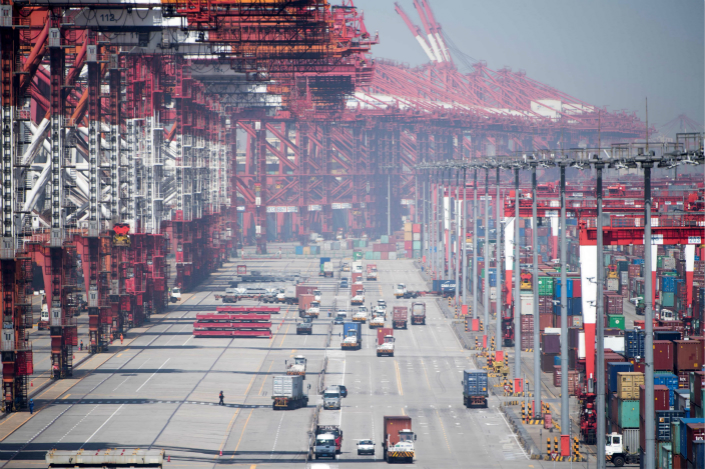China, U.S. Set to Extend Trade Talks to Third Day

China and the United States have yet to signal progress as they wrapped up a second day of trade talks, but media reported positive signs and an extension of negotiations.
The talks, led by mid-level officials starting Monday in Beijing, are the first face-to-face engagement of the two countries since Dec. 1 when Presidents Donald Trump and Xi Jinping agreed to a 90-day truce on new tariffs expiring in March.
Media reported some positive signs despite silence from both governments. The Wall Street Journal cited people close to the negotiations as saying the two sides have “made progress to narrow differences” on trade issues, such as purchases of U.S. goods and services and widening market access.
The originally scheduled two-day meeting will continue into Wednesday as “the two sides are far from striking a deal,” the Journal reported.
Bloomberg cited Steven Winberg, an Energy Department official in the U.S. delegation, as saying that “I can confirm we’re continuing tomorrow.”
Trump lauded the progress of the talks Tuesday morning as negotiators were finishing the second day of discussions. “Talks with China are going very well!” Trump tweeted.
Earlier Tuesday, Chinese Foreign Ministry spokesman Lu Kang told reporters at a regular briefing in Beijing that “we will release a detailed readout after they are concluded.” On Monday, the Foreign Ministry said both sides were expressing a will to work together to push forward a consensus.
The positive hints sent U.S. stocks higher on expectations of a possible end to the damaging trade war between the world’s two biggest economies. The Dow Jones Industrial Average climbed more than 300 points in morning trading before retreating on bank stock declines.
U.S. Secretary of Commerce Wilbur Ross told American cable TV network CNBC Monday that the U.S. and China are likely to reach a good settlement over immediate trade issues, although agreement on structural trade issues and enforcement will remain harder.
The Trump administration since last year has slapped escalating rounds of tariffs on nearly half of China’s exports to America, pressing Beijing to close trade gaps, widen market access and roll back state-backed industrial development policies. Beijing has struck back with similar tariffs on America goods.
Damage from the trade war has become increasingly visible. Analysts predicted that China’s export growth will decline from 11% in 2018 to 5.6% in 2019, dragging down the country’s GDP growth by 0.8 percentage points.
Swiss investment bank UBS said in a recent report that most export manufacturers in China have already moved or made plans to shift some production outside the Chinese mainland amid concerns over the trade tensions.
In the U.S., Apple Inc. cut its revenue outlook last week as sales of iPhones slowed in China, fueling concerns that the effects of slowing growth in the world’s second-largest economy are spilling over to American corporations.
Since Trump and Xi’s December meeting in Argentina, China has made steps to address U.S. concerns, including resuming soybean purchases, temporarily cutting punitive tariffs on U.S.-made cars and drafting a law to ensure fair treatment of foreign investment and prevent forced technology transfers.
Additional reporting by Bloomberg.
Contact reporter Han Wei (weihan@caixin.com)

- 1PDD Fires Government Relations Staff After Fistfight With Regulators
- 2China Ramps Up Effort to Offload Vast Supply of Unsold Homes
- 3China’s Elite-Focused Schools Are Failing Most Students, Top Educators Say
- 4In Depth: China’s Developers Try to Modernize After Surge in Subpar Homes
- 5Cover Story: Trading by Algorithm: Who is Responsible When AI Calls the Shots?
- 1Power To The People: Pintec Serves A Booming Consumer Class
- 2Largest hotel group in Europe accepts UnionPay
- 3UnionPay mobile QuickPass debuts in Hong Kong
- 4UnionPay International launches premium catering privilege U Dining Collection
- 5UnionPay International’s U Plan has covered over 1600 stores overseas






